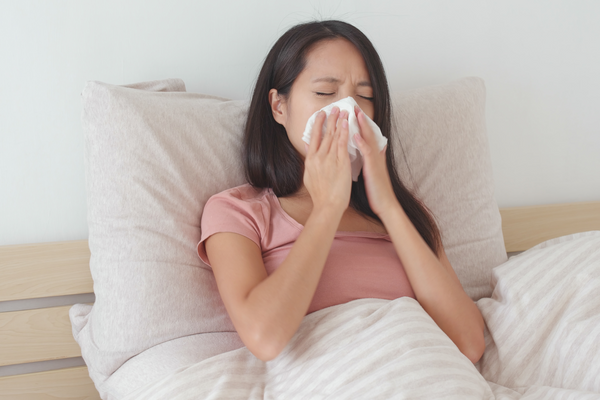How to Clean Peel & Stick Floor Tiles

Throughout the ongoing coronavirus pandemic, millions of people have jumped into do-it-yourself projects to improve their space and to help pass the extra time at home. DIY-ing, as a pursuit, has some baked-in advantages in these bizarre times. Namely, it’s you doing things by yourself in the safety of your own home, without the intervention of outside professionals. Plus, DIY projects can help to boost your confidence and give you skills that will last a lifetime. And thanks to the wealth of instructive YouTube videos, step-by-step how-to tutorials, and online classes, discovering new DIY skills no longer requires in-person instruction. As anyone with Internet access knows, you can learn virtually anything online, from how to build a table out of old pallets to repainting a bathtub to making a tufted headboard to installing self-adhesive (AKA peel-and-stick) floor tiles. While we’re on the subject, let’s talk a little bit more about peel-and-stick floor tiles. They tend to be relatively inexpensive, easy to install, and low maintenance – if you know how to care for them properly, that is.
Things to Keep in Mind Before Cleaning Your Peel & Stick Tiles
Peel-and-stick floor tiles are strong but not nearly as durable as ceramic or porcelain tiles. The cleaning methods used on different tile materials will vary, and some techniques can harm the tiles you worked so hard to install. The most important aspect to remember about peel-and-stick tiles is that these installations are made of lots of individual pieces pressed together by pressure and glue. While this gives the beautiful illusion of a single, seamless surface, each individual tile still has seams. And these seams are vulnerabilities that can be damaged by liquids and moisture over time, allowing water to penetrate down into the subfloor, causing damage and mold formation.
How to Clean Self-Adhesive Cork Tiles
Cork flooring tiles are gorgeous, versatile, and made from natural and renewable materials. Plus, cork is quite resilient and can be sealed against most stains and discolorations. The chemical sealant is clear and should be applied immediately after installation and periodically every year to protect the cork.
Cork should never be immersed in water for cleaning purposes. Instead, gently sweep the area regularly with a soft-bristled broom or use a vacuum that does not have a beater bar. Never use a hard-bristled broom or brush on cork flooring, as the material scratches with relative ease. If your cork flooring starts looking dusty, try using a dry microfiber mop. Otherwise, spot cleaning with a microfiber cloth lightly dampened with Vital Oxide will be enough for removing spills and stains.
How to Clean Self-Adhesive Linoleum Tiles
While linoleum flooring is slightly less durable than vinyl flooring, linoleum has the advantage of being cost-effective, all-natural, biodegradable, and easily renewable, making it one of the greenest flooring choices that you can make. Plus, linoleum tiles are straightforward to clean. You’ll want to sweep or vacuum regularly and occasionally damp mop as needed with a solution of 1 part Vital Oxide to 9 parts water. Just avoid soaking the floor and wipe away any lingering moisture after mopping so that it doesn’t seep through to the subflooring.
How to Clean Self-Adhesive Rubber Tiles
Rubber flooring is available in a wide selection of colors, patterns, and textures – and it’s also incredibly friendly to DIYers. This resilient flooring is durable, easy-to-clean, and ideal for use in hard-wearing environments like gyms, recreation rooms, playrooms, basements, laundry rooms, and utility areas.
Cleaning rubber flooring generally requires no more than a damp mop (never soaking wet). Always avoid using harsh chemicals like bleach on rubber flooring tiles, which can damage the material. Instead, damp mop with a solution of 1 part Vital Oxide to 9 parts water to keep your rubber tiles clean and free from debris.
How to Clean Self-Adhesive Vinyl Tiles
Vinyl flooring has been around for more than 100 years, originally invented to replace the original resilient flooring material, linoleum. In the 1940s, vinyl flooring became extremely popular for areas like kitchens and bathrooms where durability, resilience, and water resistance were key. While vinyl flooring isn’t the most durable (or resilient) flooring material available today, it is very resistant to water and easy to clean, making it an affordable, low-maintenance flooring choice. As with all other peel-and-stick tile options, you’ll want to be careful about the seams between the tiles, but applying a sealant can help prevent water damage.
Peel-and-stick tiles are pretty easy for DIYers to install since the individual pieces are very manageable. Vinyl flooring is also effortless to clean. It’s resistant to dirt, stains, scratches, and punctures, though heavy furniture should be outfitted with protective pads to prevent holes. Never use harsh cleaning agents like bleach or ammonia-based cleaners on vinyl, which can cause permanent discoloration. Like linoleum and rubber tiles, sweep and damp mop vinyl tiles as needed with a solution of 1 part Vital Oxide to 9 parts water. Happy cleaning!
Have questions about planet-friendly cleaning or reducing harsh chemicals in your home? We have answers! The Ecology Works has been leading the way in green cleaning since 1993. We can help you select the products you need to live a better, allergen-free life. Please feel free to Contact Us or message us on Facebook. No question is too small! We're here to help!





